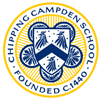Private 15549, Number 7 Officer Cadet Battalion, Gordon Highlanders Lieutenant, 4th Battalion, Scottish Rifles (The Cameronians)
Born: 24 April 1897
Enlisted: 14 January 1916
Died: 19 September 1918
John was born in Buckingham, the only son of Walter Matthew and Margaret Whytock Cox. His father, Matthew, was the headmaster of Campden Grammar School for fourteen years, 1913- 1927, and he came to the town from the Blue School in Wells in Somerset.
John began his education at the Royal Latin School in Buckingham and then attended the Blue School in Wells, where his father was a master. At the age of 14 he won the first scholarship at Exeter School and joined the school as a boarder in September 1912. He immediately joined the Officer Training Corps (OTC), rising to the rank of platoon sergeant by the time that he left the school in April 1916. He was an excellent student and was fully involved in the life of the school. He won the Scott Medal for Mathematics 1914-1915 and was also a school prefect and head of house in 1915. On the games field he was an all-round athlete. He was top of the batting averages in 1915 and on 16 June 1915 he scored 157 out of a total of 270 for 3 wickets. The school archives state that he was a “very sound bat and he uses his wrists well. Most difficult to dislodge and very good on the leg side.” On the rugby field he was a “greatly improved centre, good in attack and defence. Cuts through cleverly and feeds his wing well. Often makes ground with excellent place kicks.”
In his four years at Exeter School he held many positions of responsibility including Secretary of the Science Club, Cricket Club and Hockey Club and a member of the Library and Reading Room Committee and Games Committee. He was awarded school colours in hockey, cricket and football.
John enlisted in the army on 14 January 1916 in Exeter but was immediately put in the Army Reserve, which enabled him to continue with his education at Exeter School. He was eventually mobilised on 4 September 1916 and was posted to Number 7 Officer Cadet Battalion, Gordon Highlanders at Fermoy in Ireland. While he was at Fermoy he developed tonsillitis and was admitted to hospital. After leaving hospital he remained at Fermoy until he was gazetted to the 4th Battalion, Scottish Rifles as an instructor in physical education and bayonet fighting. He left the camp on 1 July 1918 as a 2nd lieutenant, having gained his commission on 19 December 1916, and embarked for overseas service on 2 July 1918. He arrived at Bralo in Spain, en route for Greece, on 14 July 1918, before arriving at their destination, Salonika, on 18 July.
The next two months were spent gaining experience of life in a theatre of war and John must have a made a favourable impression as he was promoted to lieutenant on 19 August 1918. The Allied army was preparing for a major attack in September and it was during the Second Battle of Doiran that began on 18 September 1918 that John was killed in action. He was attached to the 11th Battalion, Scottish Rifles and on the morning of 19 September 1918 his company attacked. On reaching the enemy wire John asked a soldier his name. “Sergeant 28396 Gormley,” was the reply and at that moment John was wounded by a bullet in the right temple and fell into his arms. He died within a few minutes and Sergeant Gormley placed his body in a shell hole in front of the wire. His commanding office wrote: “We had learnt to know him as a brave and capable officer, popular with both officers and men. He had done brilliantly throughout the battle, leading his men with that bravery and coolness which he had displayed during the whole of the recent operations. He died a glorious death and was actually killed while he was in temporary command.”
John was killed in action on 19 September 1918 aged 21 years and is buried in Doiran Cemetery in Northern Greece. The cemetery was originally called Colonial Hill Military Cemetery Number 2. The news of his death was a devastating blow for his parents in Campden as he was their only child. His mother, Margaret, died on 4 October 1919 and she is buried with her husband in St. James’s churchyard in Campden. There is a memorial inscription at the bottom of their headstone for their son.
John has his name recorded on three memorials in Campden: in St. James’s Church, in Campden School and in the High Street. It is also on the memorial at Exeter School.








No Comments
Add a comment about this page